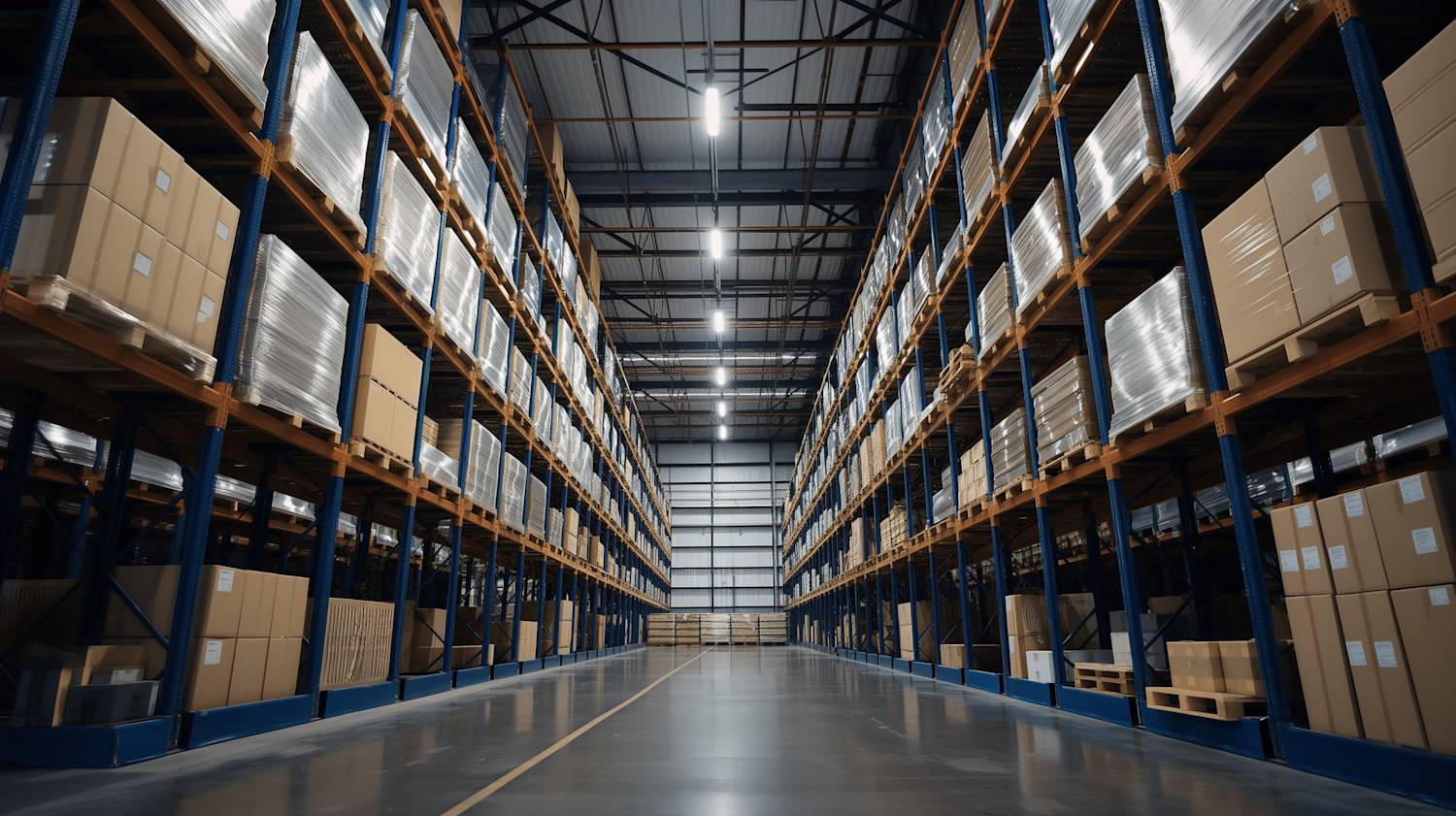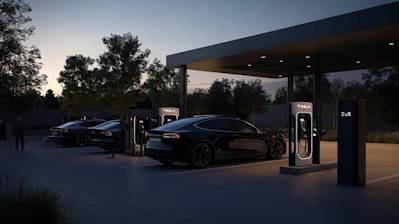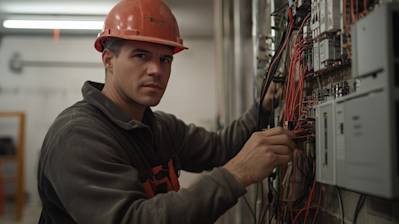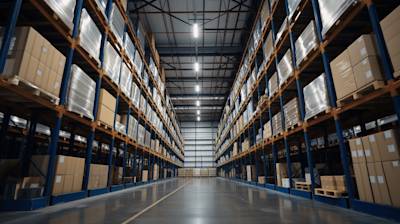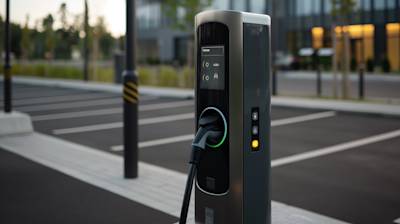If there's one thing we know about warehouses, it's that they can be vast, sprawling spaces packed with towering shelves and stacked crates. For those working within these empires of storage and distribution, appropriate illumination is a critical factor for productivity, efficiency, and safety. This is where the topic of warehouse lighting comes into play. But what exactly encompasses warehouse lighting? Which solutions are the best fit for various industrial needs, and how does the right warehouse lighting impact a business and its operations? This article dives into these questions and decodes the importance and implementation of efficient warehouse lighting systems.
Understanding Warehouse Lighting
Warehouse lighting is more than just the practice of putting up a few bulbs to ward off the dark. It involves strategic placement of various types of lights to ensure maximum visibility, reduce any chances of accidents, and increase overall productivity. From picking up a product from the right shelf to making sure the products packed into crates are damage-free – quality lighting helps in every aspect of a warehouse operation. It also plays a significant role in reducing energy consumption and contributing to the business's environmental concerns.
The Influence of Warehouse Lighting on Safety & Efficiency
Before we dive into the different types of lighting that serve the needs of warehouses, it is essential to understand how lighting impacts safety and increases efficiency in a warehouse environment. One of the main concerns in a warehouse is the safety of the workers. A poorly lit warehouse can lead to many unfortunate incidents, like missteps, falls, and injuries from machinery or stored items. Good lighting prevents such incidents, ensuring the warehouse remains a safe working space.
Benefits of Proper Warehouse Lighting:
- reduces risk of accidents and injuries
- improves productivity and accuracy of work
- decreases mistakes in inventory count or picking wrong items
- saves energy and ensures sustainability
The Different Types of Warehouse Lighting
Now that we've touched upon the importance of warehouse lighting let's delve into some of the common lighting solutions widely implemented in warehouses around the globe.
High-Intensity Discharge (HID) Lighting
High-Intensity Discharge or HID lights are cost-effective and are often used in large spaces like warehouses. They produce bright white light that is strong enough to illuminate large areas. However, they consume a lot of energy and have a slower start-up time.
Compact Fluorescent Lighting (CFL)
CFLs are an energy-efficient choice that provides lesser heat emission and a quicker switch-on time compared to HID lights. However, they may not be suitable for very high ceilings and may require more fixtures for adequate coverage.
LED Lighting
LED lighting stands as the most suitable option for warehouse lighting needs. These lights are extremely energy efficient, emit a lesser amount of heat, and have a longer lifespan. Moreover, they can produce high quality and concentrated light suitable for high ceilings and large spaces.
Energy Efficiency and Warehouse Lighting
Energy efficiency is a pressing concern for modern businesses, and rightly so. The type of lighting you choose for your warehouse can significantly influence your energy consumption levels. Outdated lighting systems not only consume more energy but also require frequent replacements, leading to increased overheads. By choosing energy-efficient solutions like LED lighting, you can ensure that your warehouse is sufficiently lit with a lower carbon footprint.
Getting Warehouse Lighting Right: Illumination Levels and Light Quality
When designing a warehouse lighting plan, factors like illumination levels, quality, and color of light, presence of shadows and glare, and light distribution need special attention. Adequate illumination levels are necessary to ensure visibility for detailed tasks. The quality of light should be high to avoid strain or discomfort to the workers. The color of light should ideally represent natural daylight to maintain the workers' circadian rhythm. Carefully planned and executed warehouse lighting can exponentially increase worker efficiency and safety.
At all times, it's important to remember that the optimal lighting setup varies from one warehouse to another, based on size configurations and specific needs. However, investing in quality lighting solutions and strategic planning will certainly enhance productivity and safety for any warehouse setup.
Frequently Asked Questions about Warehouse Lighting
What are the best types of lights for a warehouse?
High Bay Lights, LED lights, and Fluorescent lights are usually considered the best for warehouse applications. These types of lights offer broad, uniform lighting while being energy-efficient and long-lasting.
Why is lighting important in a warehouse?
Proper lighting in a warehouse can increase productivity, ensure worker safety, and decrease the chances of errors and accidents. It also contributes to the quality control process, as good visibility aids in accurate picking, packing, and inventory management.
How many lumens do I need for warehouse lighting?
The recommended lumens for warehouse lighting can vary depending on the size of the space and the tasks being performed. However, the average is between 150 and 200 lumens per square foot for general lighting. Work areas may require higher levels, while storage areas may need less.
How do I calculate the lighting needed for my warehouse?
To calculate the lighting needed for a warehouse, consider the size of your space, the type of work executed, and necessary light levels for each activity. The total number of lumens needed is calculated by multiplying the area of the warehouse by the recommended lumens per square foot.
What is LED warehouse lighting and how is it beneficial?
LED warehouse lighting is a type of lighting that uses Light Emitting Diodes (LEDs), which are much more efficient than traditional light bulbs. They emit strong, bright lighting that covers a large area, use less energy, have a longer lifespan, and require less maintenance than other lighting types. This makes them a cost-effective solution for warehouse lighting.
What is the difference between High Bay and Low Bay warehouse lighting?
The main difference between High Bay and Low Bay lights is the height at which they are installed. High Bay lights are designed for spaces with ceiling heights above 20 feet, while Low Bay lights are intended for spaces with ceilings under 20 feet. The type of light used depends on the height of the warehouse's ceiling.
Why should I consider natural lighting for my warehouse?
Natural lighting, often achieved through skylights or windows, can benefit a warehouse in several ways. Besides reducing electricity costs, it can improve workers' mood, decrease the chances of accidents, and even improve product visibility. However, it should be complemented with artificial lighting for nights and cloudy days.
What factors should I consider when planning warehouse lighting?
Planning warehouse lighting involves considering several factors such as the height of ceiling, type of work conducted, number of work hours, energy efficiency, maintainability, and cost. Natural light sources and the adding of task lighting in specific areas are also essential factors to consider.
How often should warehouse lights be maintained?
Maintenance schedules for warehouse lights can depend on the type of lighting you use. As an example, LED lights require less frequent maintenance due to their longevity. Nonetheless, periodic inspections should be made to ensure that all lights are functioning properly and providing adequate light.
How can I save energy with my warehouse lighting?
There are a few strategies to save energy with your warehouse lighting. Switching to energy-efficient LED lights can dramatically reduce energy consumption. Adding motion sensors and timers can also minimize energy use. Additionally, integrating natural light into your lighting strategy can lead to significant energy savings.
Pros & Cons of Warehouse Lighting
Pros of Warehouse Lighting
Enhanced Worker Safety
- Proper warehouse lighting significantly improves visibility, reducing the risk of accidents and ensuring employee safety.
- With well-planned warehouse lighting design, obstacles can be easily seen and accident risk mitigated.
Increased Productivity
- Better and brighter lighting in warehouses tends to boost worker productivity as employees are able to perform their task more efficiently.
- Optimized warehouse lighting enhances visibility, making it easier for employees to read labels, pick and pack items, and undertake detailed tasks.
Enhanced Accuracy
- Proper warehouse lighting can help reduce mistakes. With clear visibility, the rate of errors in packing, shipping, and inventory management can be significantly reduced.
Energy Savings
- Modern warehouse lighting such as LED lights can help companies save on energy costs. Led warehouse lighting is more efficient and lasts longer than traditional lighting methods.
- Efficient warehouse lighting systems with sensor technology can minimize energy wastage by regulating light use based on need and occupancy.
Improved Aesthetics
- A well-lit warehouse with strategic warehouse lighting design can improve the overall aesthetics and ambiance of the warehouse.
Cons of Warehouse Lighting
High Initial Costs
- The initial cost of installing quality warehouse lighting, particularly when opting for energy-efficient options such as LED lighting, can be quite high. However, long-term benefits such as energy savings and increased efficiency often justify the initial investment.
Complex Installation And Maintenance
- Warehouse lighting installation may require professional assistance, leading to higher costs and possible downtime.
- Massive warehouse spaces might also require regular light maintenance including bulb changes, which can be complex and time-consuming.
Incorrect Lighting Might Cause Glare
- If the warehouse lighting is too bright or if it's installed incorrectly, it can cause glare which can be uncomfortable for workers and can even potentially cause accidents.
Risk of Inadequate Lighting
- Due to the typically large scale of warehouses, ensuring evenly distributed and adequate lighting throughout can be challenging. Inadequate lighting in some areas can compromise worker safety and productivity.
Summary
By upgrading your warehouse's lighting system, you can not only improve safety and productivity but also make significant energy savings. The application of modern warehouse lighting technologies, like LEDs, can drive a brighter, safer, and more efficient environment for staff while also slashing energy expenses. The ongoing evolution of lighting technology shows that this could usher in a whole new era of eco-friendly and cost-effective warehouse operations.
An integrated approach to warehouse lighting ensures the optimal performance of a storage facility. A well-lit warehouse enhances visibility, prevents accidents and provides a better working environment. There's no denying the benefits of investing in warehouse lighting as it's an essential part of maintaining a productive, safe and successful warehouse setting. Warehouse lighting can even play a part in reducing human errors, improving picking accuracy and ensuring overall warehouse safety.
Warehouse lighting, with its unique set of challenges, is rapidly becoming streamlined and efficient with LED technologies and smart lighting options. Keeping in mind the environmental factors, an upgrade to better lighting can steer towards greener practices. Adequate, efficient and reliable lighting is essential in warehouses, keeping employees safe and maintaining high levels of productivity. As advances in lighting technology continue, the future of warehouse lighting looks bright.
About Sagan Electric
Welcome to Sagan Electric! We are a Sacramento, CA based company renowned for offering a wide range of electrical services. We have been illuminating homes and businesses with our exceptional service since our foundation. Our highly skilled and licensed electricians always put the customer first and strive to exceed expectations on every project. We specialize in everything from general electrical repairs to complete rewiring and transforming old, outdated systems into efficient, fully functional ones. We are your go-to electricians, aiming to make your life easier with our safe and reliable services.
Tags: warehouse lighting, lighting solutions, warehouse efficiency,


